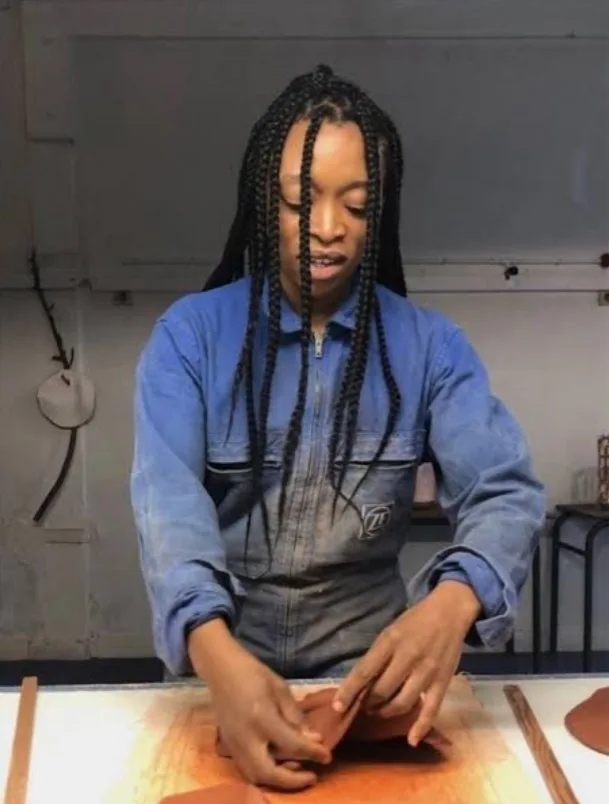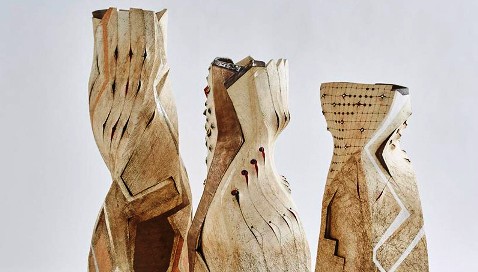Pottery is the process of forming vessels and other objects with clay and other raw materials, which are fired at high temperatures to give them a hard and durable form. Contemporary African pottery is eloquence in form as well as finesse in the finish – both of which are not generally expected in a vessel of utility. This works well because these utilities are mainly used for display and scrutiny. Here African artists in pottery presenting it in all its glory.
Andile Dyalvane: Qobo-Qobo, South Africa
Andile Dyalvane was born in a small village of Ngcobozana in Qobo-Qobo in the Eastern Cape and is of Xhosa origin. He remembers a childhood full of herding his father’s cattle and he credits this as what established his connection to the land and his Xhosa culture which is the basis of his work today. Dyalvane’s approach to his work is guided by a deep spiritual connection to his Xhosa ancestors. He creates complex large-scale work which is metaphoric of the vessel through which he seeks to honour his cultural traditions and share his journey of healing.
Dyalvane completed a National Diploma in Art and Design and another one in Ceramic Design. He uses scarification as a technique in his work and this is in imitation to the Xhosa practice of ukuqatshulwa which is body scarification. In 2005 he co-founded Imiso Ceramics with fellow artist Zizipho Poswa – a contemporary art studio based in Cape Town where they both store their hand-crafted collectable art pieces. His work has been showcased in Denmark, Taipei, California, France and New York City.
Ranti Bam, Lagos & London

Ranti Bam A British-Nigerian sculptor and ceramicist from London, England and Lagos, Nigeria and is known for her colorful and sculptural ceramics works made with a variety of clay techniques. She obtained her Master’s at the School of Art, Architecture and Design in London. Her visit to the Africa Remix exhibition at the Hayward Gallery in London where she saw work by other African potters inspired her to start pursuing clay so she began her ceramics studies at the City Literature Institute in London.

Bam is intrigued by the idea that human beings are inseparable from their environment. She mainly works with abstract vessels which she builds by putting slabs together and further enhances with slips and stains. She finds that the process of putting the material on fire pushes the material’s boundaries and allows her as the artist to experiment what the material can do and how far it can do it. Bam has travelled across the world and has even spent some time as a resident in Greece. Her work has been workshopped in Nigeria, Zimbabwe, Kenya, England, and some of it has been acquired by the Brooklyn Museum in New York.
Ceramics today are defined by their modernity and they are able to exist as this because there has been a survival of centuries of production, experimentation and refinement by potters seeking to perfect the craft. The two artists above represent a vast industry of artists across the African continent, artists who are inspired by how far the art has come and are seeking to take it further.




